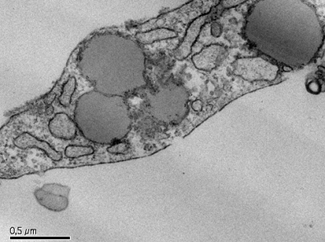
Researchers of the Spanish National Research Council and Catalan Institute of Cardiovascular Sciences have discovered the receiver responsible for the selective collection of esterified cholesterol in the vascular wall. This type of cholesterol is accumulated in the organism like small drops of fat that can aggravate the vascular injuries and generate thrombosis.
A team of scientists at the Cardiovascular Research Centre, a joint centre of the Higher Council of Scientific Research (CSIC) and the Catalan Institute of Cardiovascular Sciences (ICCC), has discovered a new mechanism which allows the massive accumulation of esterificat cholesterol in the smooth muscular cells of the human vascular wall. This study has been published in the journal Arteriosclerosis, Thrombosis, and Vascular Biology.
Specifically the researchers have shown that low-density lipoprotein (LDL), known as bad cholesterol, modified by aggregation (agLDL) is interiorised by the smooth muscular cells of the human vascular wall by means of the lipoprotein receptor LRP1.
The scientists have discovered that the lipoprotein receptor LRP1 is responsible for the selective capture of esterificat cholesterol in the vascular wall and that agLDL induces a high intracellular concentration of esterificat cholesterol without there being an associated induction of endogenic cholesterol synthesis. This is a new mechanism which allows the massive accumulation of esterificat cholesterol in an intracellular form in the smooth muscular cells of the vascular wall.
Experiments with electronic and confocal microscopes carried out by researchers indicate that esterificat cholesterol derived from agLDL accumulates in lipidic drops which transform the vascular cells into escumoses cells.
Lipidic accumulation in the cells is key to early arteriosclerotic lesions (increase in the thickness and hardening of the arteries) developing into advanced lesions; and for arteriosclerosis to degenerate into thrombosis, the main cause of acute coronary conditions such as angina or heart attack.
References
Article: "Cholesteryl Esters of Aggregated LDL Are Internalized by Selective Uptake in Human Vascular Smooth Muscle Cells". Vicenta Llorente-Cortés; Marta Otero-Viñas; Sandra Camino-López; Paula Costales; Lina Badimon. Arteriosclerosis, Thrombosis, and Vascular Biology. Jan 2006; 26: 117-123

